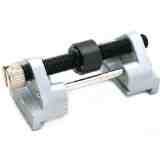Sharpening stones
Waterstone, Oilstone, Whetstone
Do you know the difference of
sharpening stones ?
?
Until today I didn't and it's only because of research that I now do. My problem is that for 50yrs, I and many other carpenters and joiners I know and have worked alongside, have been using oil on our stones.
We've used 4 in 1 oil, engine oil, WD40 oil, Uncle Tom Cobbley and all oil.
We've possibly been putting oil on our waterstones for years and never known the difference.
First let's clear and I won't mention it again 'whetstones'. Whet means sharpening and so the word is confusing for this old man.
 Oil stones are fine grades of sedimentary rock composed of microcrystaline quartz called Novaculite which is found in the Ouachita mountains of Arkansas.
This is the major material of Charnley Forest and Turkey oilstones.
Oil stones are fine grades of sedimentary rock composed of microcrystaline quartz called Novaculite which is found in the Ouachita mountains of Arkansas.
This is the major material of Charnley Forest and Turkey oilstones.
However and to be contradictive, they can also be used with water to lubricate.
Waterstones are basically other stones, the majority of which are or were found in Belgium,Kyoto Japan and the Ardennes.
The one remaining quarry in Belgium produces the legendary Yellow/Grey Corticule which is formed by two different rock strata, Belgian Blue and Belgian Corticule bonding together.
The blue is a finer grain than the corticule, thus that side of the stone is used for honing
Japanese stones
Japanese sharpening stones are softer than Novaculite and should only be lubricated by water because oil reduces its effectiveness.
This softer stone creates a slurry of worn material and water which helps to sharpen and polish the blade of the tool being sharpened.
The Japanese craftsmen still use extremely fine grades of stone to sharpen their tools and swords, unlike most of us who now mainly use manufactured stones because of the cheaper cost, better consistency and avaiability.
Manufactured stone
The majority of sharpening stones today are made from a bonded abrasive of carborundum or corundum. They have no impediments which can be found in stone and have better sharpening qualities.
ie, you can sharpen a blade quicker They can be made in all grades from rough to smooth and are far cheaper than their stone equivalents.
Many are made specifically for oil lubrication.
When buying stones they are usually defined as having a Medium and Fine side. I suppose through experience they know the average grade to apply.
Types of Stone
Slip stones for sharpening lathe tools and gouges.
Scythe stones for of course scythes.
Round carving stones for wood carving tools.
For flat implements such as plane or chisel blades there are aids to provide the perfect angles to hone.
Stanley Honing guide.
Faithful honing Guide.
Trend Fast Track Sharpening Kit.
Veritas Sharpening System
 For beginners to woodworking I recommend you use one of the above.
For beginners to woodworking I recommend you use one of the above.
Sharpening tools is quite difficult until experience is gained.
Although a simple version was in my first box of tools many years ago, I preferred to learn how to hone without it and so have never used one.
I will suggest from what I have learned today that all natural stones should be lubricated by water, ( Apart from mine )
And what I have also learned is that the waterstones should be kept immersed in water, the container not being an old oil can !!
The only consolation for me today is that whilst using the oil,
it's helped to reduce the amount of cracking my fingers have suffered over the years.
I can also have a good laugh at myself !
Return to Woodworking Tools
From Sharpening Stones go to Woodworking